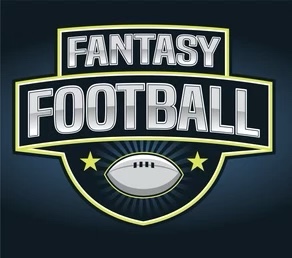
Fantasy Sports started in the sixties when Oakland executive Wilfred "Bill" Winkenbach launched the original fantasy football league. Since those humble roots, this digital contest has expanded into a international movement engaging over 60 million participants in North America by itself.
Today’s enthusiasts can select between year-long commitments that reflect professional sports calendars or daily contests offering real-time reward through quick-play formats. Each approach appeals to distinct competitor styles, with different levels of dedication and strategy requirements.
Throughout this comprehensive guide, first-timers will grasp essential fundamentals while veteran managers acquire expert tactics to win their leagues. Whether you're drafting your initial team or seeking that victory edge, these perspectives will enhance your fantasy approach.
Exploring Fantasy Sports?
Fantasy Sports permit players to build virtual teams using actual athletes whose actual statistical performances translate into points within a rivalrous framework. These virtual contests form simultaneous competitions where awareness, planning, and sometimes randomness determine outcomes.
NFL football heads the fantasy landscape, but basketball, baseball, hockey, soccer, golf, and even developing esports have developed dedicated audiences. Each sport features unique scoring systems mirroring the key statistics valued in those physical competitions.
Daily Fantasy Sports (DFS) notably diverges from seasonal season-long formats by compressing the experience into compact timeframes. While season-long leagues necessitate months of focus through waiver moves, trades, and lineup decisions, DFS contests conclude quickly—sometimes within a single day—permitting players to rebuild entirely new rosters for subsequent competitions.
How Fantasy Sports Function
Alternating drafts serve as the most common selection method, switching order each round to guarantee fairness, while auction formats grant managers designated budgets to purchase players. Best ball eliminates weekly lineup decisions by systematically recording highest-scoring players.
Scoring systems change substantially across platforms and sports. Point-Per-Reception (PPR) rewards NFL receivers with supplemental points for catches, whereas standard formats emphasize primarily on touchdowns and yardage. Custom leagues permit commissioners to alter values, creating unique strategic environments.
Redraft leagues begin fresh annually, needing complete team reconstruction. Dynasty formats enable managers to keep most roster spots between seasons, focusing on long-term player development. Keeper leagues maintain a middle ground, supporting teams to hold onto limited player cores while renewing click here remaining positions through annual drafts.
Picking the Best Fantasy System
ESPN offers excellent broadcast integration, streaming video content and analysis instantly alongside management tools. Yahoo presents intuitive interfaces with comprehensive free offerings. Sleeper has transformed the mobile experience with community-driven features and modern design elements attracting younger demographics.
DraftKings succeeds with tournament variety and aggressive promotional offerings. FanDuel features somewhat simpler gameplay mechanics, which makes it accessible for beginners. Underdog has built a niche through original "pick'em" contests blending player props with fantasy concepts.
Mobile applications now control fantasy engagement, though desktop platforms usually support enhanced functionality for complex tasks like draft preparation or trade analysis. Advanced managers routinely utilize both formats, taking advantage of each platform's strengths relative to specific needs and circumstances.
Drafting-Day Tactics
Preparation begins a period before draft time through regular mock draft participation, studying expert rankings, and monitoring Average Draft Position (ADP) data. These habits develop familiarity with player valuation patterns and typical draft flows.
Strategic-value drafting determines relative worth above replacement-level players at each position, boosting roster efficiency. Top-talent-first approaches disregard positional considerations to accumulate raw talent, fixing balance later through trades.
Slot-based scarcity requires strategic consideration of supply/demand dynamics. QB-focused drafting strategies frequently underperform because high-quality options exist in later rounds. On the other hand, standout running backs deserve premium consideration due to rapid talent dropoff and injury susceptibility leading to position-wide volatility.
Ongoing Team Management Advice
Waiver wire monitoring divides champions from also-rans. Effective managers commit substantial resources toward following breaking news, injury reports, and emerging statistical trends. Proactivity exceeds reactivity when adding newly valuable assets.
Trading effectively requires understanding emotional motivations beyond pure player valuation. Recognizing roster imbalances among opponents opens mutually beneficial exchange opportunities. Ideally begin negotiations with fair offers, avoiding insulting proposals that harm future trading possibilities.
Bye weeks involve early planning rather than scramble-style adjustments. Savvy managers distribute these scheduled absences across roster positions during draft construction. Injured stars often become acquisition targets from struggling teams desperate for immediate production, presenting patient managers with playoff-peaking assets.
DFS-Specific Strategy (Daily Fantasy Sports)
Contest selection crucially shapes ideal strategy. 50/50 contests (50/50s, Double-Ups) benefit consistency and stable players. Guaranteed Prize Pool tournaments (GPPs) require contrarian thinking and big-play to differentiate entries among thousands of opponents.
Fund management principles suggest restricting tournament exposure to 10-20% of available funds, minimizing variance from wiping out resources. Conservative growth approaches create long-term viability within this dynamic format.
Synergizing correlation through quarterback-receiver combinations maximizes point potential during explosive offensive performances. Reviewing Vegas betting lines, weather conditions, and defensive matchups offers contextual edges against uninformed opponents.
Research tools steadily evolving, with player projection models, lineup optimizers, and ownership forecasts becoming increasingly sophisticated. Integrating these resources without depending too much on them creates competitive advantages against both technology-dependent and gut-reliant competitors.
Fantasy Sports and Gambling: Where They Align
Traditional sports betting and fantasy competitions have analytical foundations despite structural differences. Both activities emphasize statistical analysis, situational awareness, and recognition of market inefficiencies.
Player prop wagers accurately reflect fantasy point expectations, introducing arbitrage opportunities for savvy participants who detect discrepancies between these related markets. Line shopping across multiple platforms works equally in both domains.
Legal considerations change significantly by jurisdiction, with regulatory frameworks progressing constantly across states. Prudent engagement requires understanding applicable laws, applying strict budgetary constraints, and maintaining perspective on entertainment value versus financial motivations.
Avoidable Mistakes to Sidestep
Loyalty-driven bias often compromises objective decision-making. Managers overestimate players from beloved teams while bypassing rivals irrespective of statistical projections. Championship-caliber play calls for emotional detachment during review processes.
Head-to-head analysis delves beyond simplistic rankings. Weather impacts, scheme adjustments, personnel changes, and motivation factors provide deeper context for performance expectations. Shallow research produces surface-level results.
Roster inertia prompts managers to hold onto underperforming players due to draft capital investment. Winning teams ruthlessly evaluate production rather than reputation, taking difficult decisions without sentimentality. Yesterday’s performance predicts nothing about tomorrow’s outcomes.
The Evolution of Fantasy Sports
Best ball formats keep growing in popularity by eliminating tedious weekly management requirements while supporting season-long engagement. Pick'em contests ease the experience further through player-versus-player propositions rather than complex roster construction.
NFT integration has begun redefining ownership concepts within fantasy ecosystems. Blockchain verification enables individual digital assets depicting team ownership, achievement records, and collectible moments from fantasy competitions.
International expansion offers massive growth potential, particularly across European soccer markets, Australian rules football communities, and cricket-dominant regions. Cultural adaptation of contest structures will enhance global accessibility.
Artificial intelligence rapidly enhances analytical tools, computing vast information quantities beyond human capability. Machine learning algorithms identify subtle performance patterns, injury indicators, and matchup advantages, advancing research methodologies across casual and professional fantasy participants.
 Alana "Honey Boo Boo" Thompson Then & Now!
Alana "Honey Boo Boo" Thompson Then & Now! Brian Bonsall Then & Now!
Brian Bonsall Then & Now! Ashley Johnson Then & Now!
Ashley Johnson Then & Now! Tiffany Trump Then & Now!
Tiffany Trump Then & Now! Danny Pintauro Then & Now!
Danny Pintauro Then & Now!